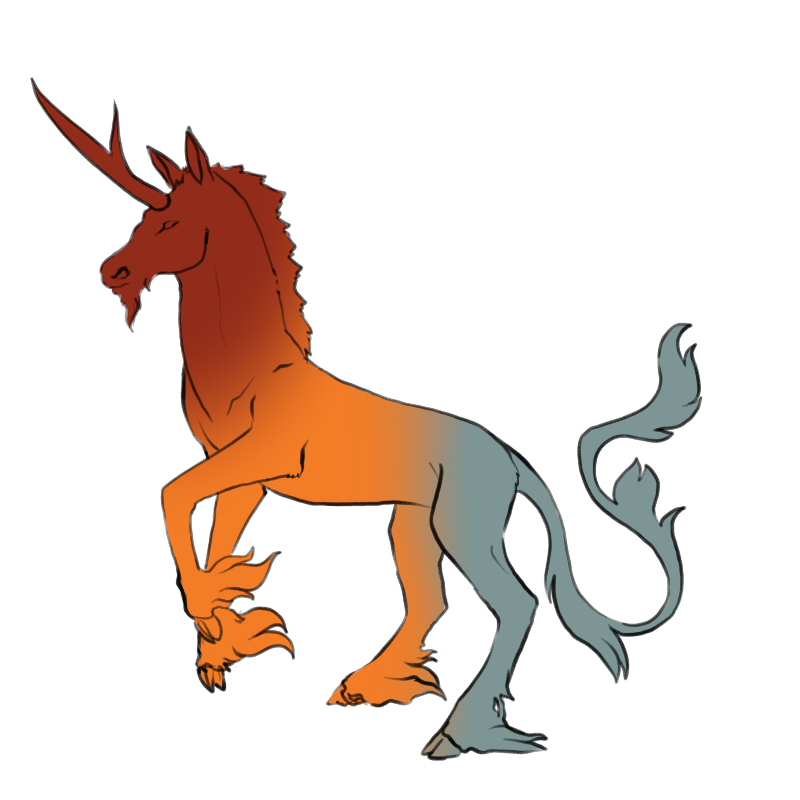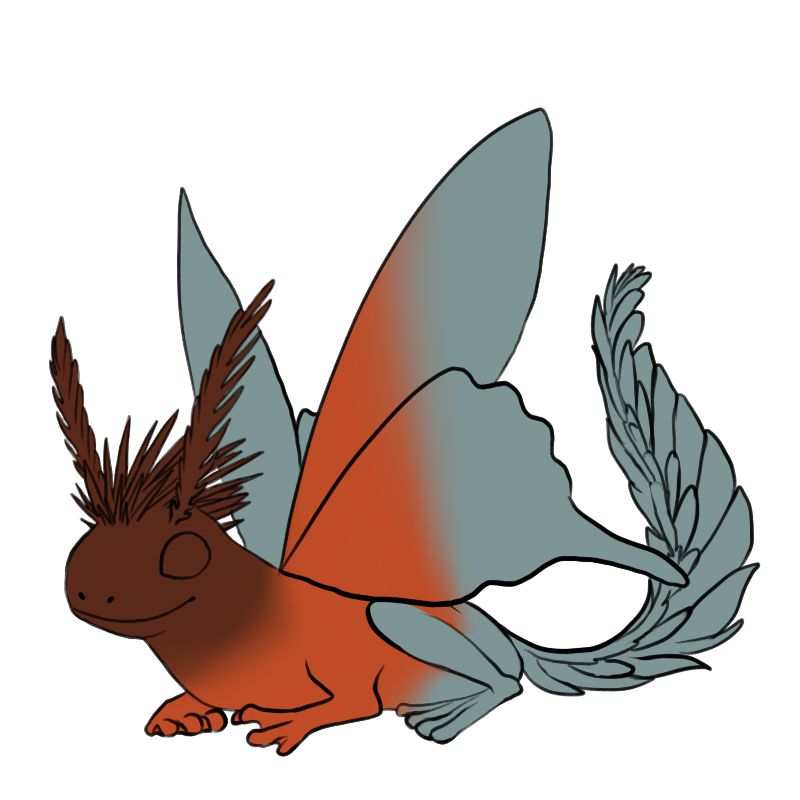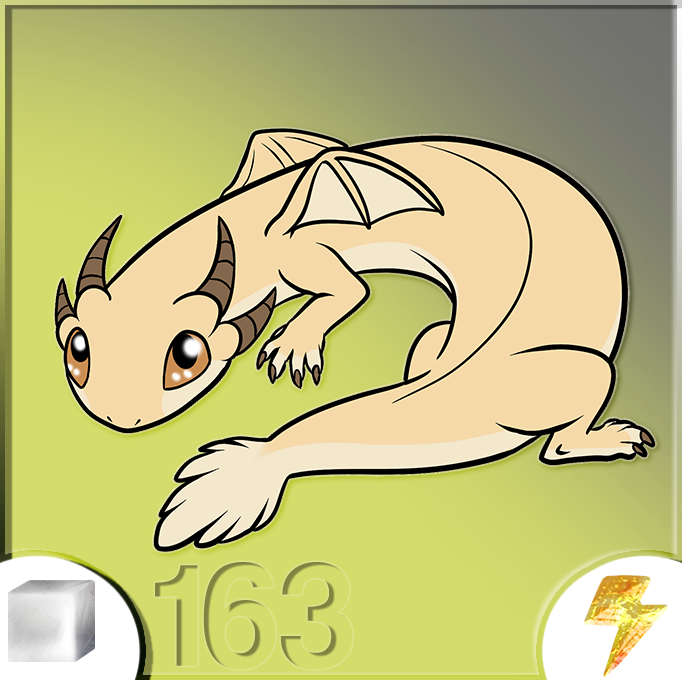Traits
Bipedal Body
A dragon that stands on two legs and has a set of arms. Its center of mass while running should be between its thighs. It may rest on all fours when not in motion. Some dragons have longer front legs that they pull up when they are running, and are thus bipedal. These front legs are not adapted for walking and will end in sharp digging claws that prevent running on them. The dark area shows the amount required for a dragon to gain lined and shaded exp. The whole colored area shows the amount required for fullbody and background exp, as well as activity rolls. Note that the range for winged and wingless varies slightly!


Monstrous Body
Just…what is this dragon? Its body is unable to maintain a solid shape. It can resemble any body shape, but will clearly be melting or deteriorating in some fashion. Here are the options you can choose from (or pick all) to show that your dragon has a monstrous body:
- Melting
- Evaporating
- Bones/flesh sticking out
It can have between zero to four legs…but this does not need to be an even number, or even symmetrical. When melting or deteriorating, it will always move in the same direction. It will not create localized cloudy feathering, oozing manes, or so on (unless those traits are on the dragon’s genes).
Since the number of legs and length varies dramatically for these dragons, reference the nearest body type to your design to find out what coverage is needed for this dragon to gain EXP or activity rolls.
Avoid creating long trails of melting or evaporating material. Deterioration fizzles out very quickly, so adding long-lasting effects like that require magic. When adding bone structures, they should resemble bones that would naturally be in the area. In example, you can put a spine-like set of bones on the back, but not on the legs. Plating still needs the appropriate trait before it can be used as a monstrous effect.
Color Rules
- Bones and spines follow regular Bone Color rules.
- Flesh may be any color, though it must be consistent with any other visible flesh.
- Melting areas will always match the color of the melting area. It may have minimal sheen and transparency in areas it has dripped off of the body--these effects must very subtle!
- Only skin, spines, plates, and ear tips may have accents. Flesh and regular bone will not have accents.
- Traits similar to Monstrous effects may stack. In example, a dragon with a Thorned Spine trait does not need to do anything extra for the snout to count as Monstrous. The same applies to Plating, Aegis, Transparent Skin, Dorsal Spines, Shell, True Sight (if it is somewhere on the body), Beaked, Shell, and other effects that resemble monstrous effects--as long as they appear somewhere on the body.
Mythic Body
This allows you to have a free-for-all in how you design your dragon’s body! It allows you to choose the placement of wings, snout, limbs, and tail (if they have them). It may have up to four wings, one snout, four limbs, and one tail.
It is an incredibly rare trait, with a very low chance of passing down. It may have any of these modifiers for free, as long as they affecting the main body, rather than extremities: Iridescence, Bioluminescence, Heraldry, Plated Underbelly, Plated Spine, Thorned Spine, Translucent, Dorsal Spines, Frog Throat, Miniature, Disassembly, Glitch, Coils, Display, Neckfrill, Tentacles, Capricorn, Many-finned, Pelvic Spines, Dorsal Fin, Gilled, Debris, Bumble, Odd Ears, Curled, Frilled, Plumes, Extensions, Companion, Multi-limbed, Transparent Skin, True Sight, Boneless, Tattered, Engraved, Shimmer, Gilded, Sheen, Armored.
In addition to any of those modifiers, you can get creative. Want to reference extinct species? Go for it! Want to make up your own anatomy? That's an option, too! Want to keep things simple and just give them an extra pair of wings? Honestly, the options are limitless. Have fun!
Quadrupedal Body
A dragon that stands on four legs. No matter the shape of its legs, its center of gravity should be near the belly or chest. It should not be overly long, as that would resemble the Wyrm body type. Here are two examples--one with and without wings. The dark area shows the amount required for a dragon to gain lined and shaded exp. The whole colored area shows the amount required for fullbody and background exp, as well as activity rolls. Note that the range for winged and wingless varies slightly!


Wyrm Body
A long and noodle-y dragon. May have zero, two, or four limbs of the same size; they should be proportionately small and/or distant from each other compared to the length of the body. Wyrm dragons may participate in Rite of Ascension without using an Ascension Elixir, even if they do not have wings. The color shows the amount required for full body credit. Note that winged and wingless dragons have a different minimum!


How long does a wyrm have to be?
The example below is a dragon that could count as either Quadrupedal or Wyrm. The body section of a Wyrm should appear this long or longer. Tail length does not contribute to how stretched-out a wyrm needs to be.
Wyvern Body
A dragon that stands on two legs and has no forelimbs (other than wings). A Wyvern that is also wingless is a sorry sight indeed. Winged wyverns sometimes walk with their wings to support them, similar to pterodactyls and bats. Red represents minimum coverage to gain colored/shaded exp, while the colored area represents the minimum for activities. The range is the same both for wingless and winged wyverns.

